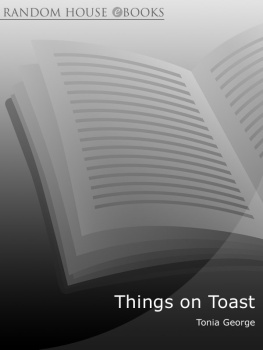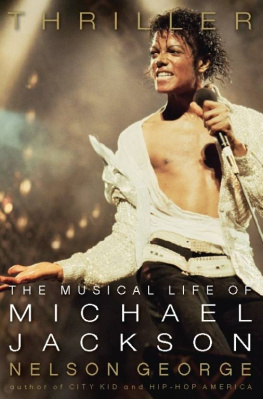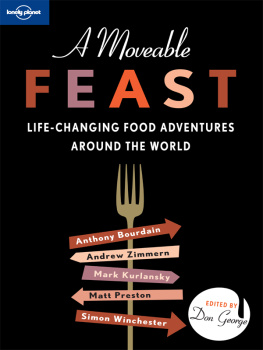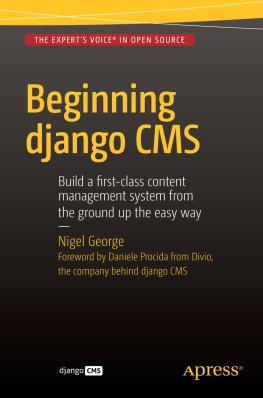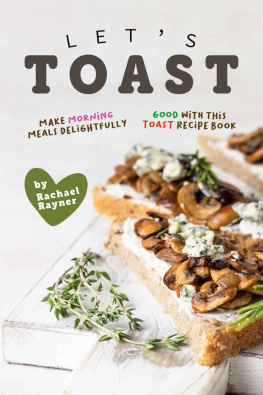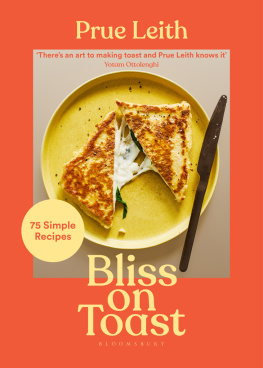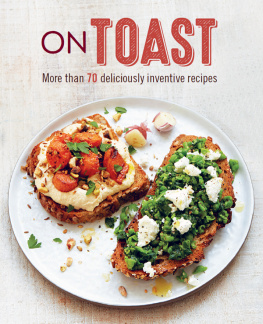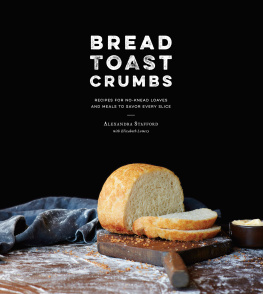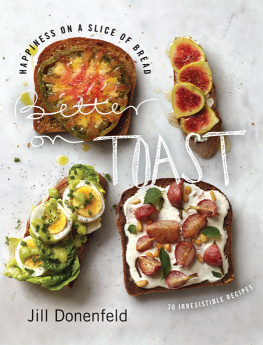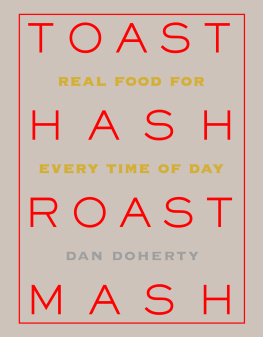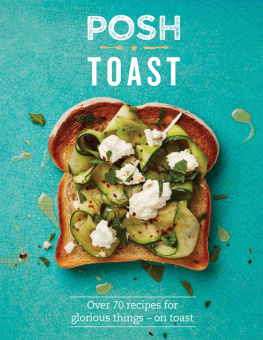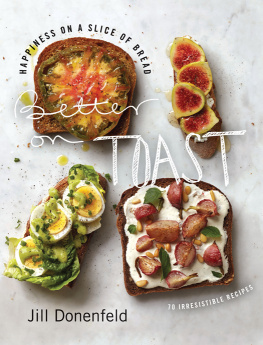contents
list of recipes
To my mum, who always found time to make me toast in the morning!
introduction
I could live on toast. I wouldnt need an imaginary desert island to force me to make that choice; its quite simply one of the most perfect foods ever invented. For what satisfies hunger better or quicker than a simple golden slab of toast dripping with butter? What stirs up the appetite better than wafts of yeasty bread slowly caramelising? This promise, the sublime smell, is often just as tantalising as the first bite. This book is dedicated to the enjoyment of toast in the most indulgent manner: showering the bed with crumbs and not caring that they are going to tickle you for days after.
But to truly celebrate toast in all its crisp, fluffy, charred glory, we need to liberate it from the breakfast table; release it from the shackles of the toast rack. After all, I eat toast throughout the day, most days of the year. Griddled sourdough draped with tomatoes and drizzled with grassy olive oil with a glass of Chianti makes a wonderful start to a summers evening, in the same way that a midnight snack of chocolate spread on hot white toast will ease you into a wintry night of sweet dreams.
I have always shunned the conformists meat and two veg rule in favour of something altogether more relaxed. I get a smug glow when I settle down to a supper of soft-boiled eggs with soldiers slathered in Gentlemans Relish and a green salad. It reminds me just how good it is to be an adult even if that only really means having the choice to behave like a child again.
Toast has never been a friend of restraint. It needs to be generously smothered with butter or unctuous juices to save it from being dry. Dry toast is purely for when youre sick; a good comforter. What youre after is juices dripping into every pore of the crisp surface, whether from the oily flesh of an avocado, or the rosy juices of a rare steak. As John Thorne wrote in Pot on the Fire (2000), Unbuttered toast is a substance half complete, and to be forced to eat it in that state is necessarily to feel deprived. I dont advocate deprivation, especially when it comes to toast.
Toast is much more versatile than many people give it credit for. It goes way beyond the ubiquitous cheese or beans on toast (although you will find splendid versions of both these masterpieces on the pages that follow). Toasting bread transforms bread into a crisp counterfoil that is a perfect companion to almost anything, whether that is a spoonful of voluptuous lemon curd, some softly scrambled eggs or a tangle of watercress and flaky mackerel. It is equally as happy to play the supporting role to slices of pork with a punchy salsa verde, as it is stepping into the lead, to become an edible scoop for different pts and dips.
My only rule is that any jams, butters or homemade toppings (such as my Chocolate Hazelnut Spread () need to come to room temperature before they meet the hot toast, so the heat of the toast can turn them into molten pools of deliciousness. I keep a small chunk of butter at room temperature so I dont have to battle with butter from the fridge and dont have to acknowledge the existence of margarine.
Whatever country you are in, there is always a toast recipe to match and they often have one common factor: they are thrifty ways of reviving bread that has seen better days. Stale bread was endemic in rural peasant life, since fresh bread was not available every day and wastage couldnt be tolerated. Born out of this are French tartines, Italian crostini and bruschette, Spanish pintxos and the various manifestations of bread dipped in egg eggy bread, pain perdu, torrijas or French toast, depending on where you are in the world and how you like to describe it.
Precisely why toasting became and has remained so peculiarly English a delicacy, aside from the thrift issue, is suggested by Elizabeth David in the final pages of her tome English Bread and Yeast Cookery: I wonder if our open fires and coal ranges were not more responsible than the high incidence of stale bread for the popularity of toast, she muses after having seen a multitude of Victorian toasting tools in cookbooks and museums.
Many people wax lyrical about their nostalgic memories of toasting bread over open fires. The smoke does indeed add a wonderful flavour and ensures the toast remains fluffy inside and charred on the out, but it is no longer an everyday option. Once again, Elizabeth David puts it so astutely when she cynically recalls that, more toast fell off the fork into the fire and was irretrievably blackened than ever reached our plates. If you are toasting over a campfire or barbecue, forget the toasting fork and try to procure the sort of clamp usually reserved for incarcerating fish. If youre an Aga owner, youll be able to use this on your hot plate too. My favoured method for toast is a cast-iron griddle; it doesnt compete with the electric toaster on convenience and speed, but it gives you attractive dark lines and a more char-grilled flavour. Be brave and toast it right up until the moment you think it is burnt; after all, the word toast comes from the Latin tostum, meaning to scorch. The grill is useful when you want to melt the topping, when making Welsh rabbit or a hot goats cheese salad. Always toast the bread a little before you add the topping and spread the topping right to the edges so the crusts dont get too singed.
I think the success of toast relies largely on choosing a good-quality bread in the first instance; one with a low water content, or it will steam and go soft the minute it hits the plate. Second, it must be cut correctly. Toast cut into triangles tastes far superior to toast cut into squares, Im sure of it. Dont ask me to explain the hows or whys, but the same principle applies when slicing bread; it needs to be at least 12 cm thick to achieve that softness inside without becoming brittle (which is only acceptable for Melba toast).

When choosing your bread, you have to think about the suitability of the flavour as well as the texture, so it can do its job properly. French toast needs a light, fluffy bread, such as challah, whereas bruschette require a dense rustic bread. The term rustic is a very loose definition for any bread with a nutty, wholesome flavour and an uneven holey texture, such as a pugliese or pain de campagne. The infamous inimitable Poilne sourdough represents a further step in this direction; the nuttiness being joined by a sour tang. These rustic breads are quite stubborn about toasting compared to the more compliant white bloomer, but they have a deeper flavour and make great bruschette or sturdy bases for heartier toppings such as a char-grilled steak.
Having noisily crunched my way through my whole body weight in toast, I can truly say there is no food as versatile, thrifty and mightily delicious as the humble piece of toast. I always knew I could live on toast, but I think anyone could live on toast and never tire of it. It is indeed the best thing since sliced bread.
Next page
